In the digital marketing industry, having a high-converting sales funnel can take your start-up business to a multi-million-dollar marketing machine.
If you want to take your business from zero to hero in no time, you must learn what a sales funnel is and how it works.
Read our complete guide to find out how you can build sales funnels designed to turn your website’s visitors into paying customers.
What is a sales funnel?

Why are some companies rising to the top with ease, while others stagnate?
It all comes down to sales funnels — the marketing term for the journey potential customers go through on the way to purchase your products.
The whole purpose of a sales funnel is to build your website’s online traffic, create qualified leads, and convert prospects into paying customers.
Understanding your sales funnel is so important because you can identify places where the funnel doesn’t work well and what you can improve.
For example, perhaps a lot of browsers click off the website on a certain page because of something on that page that doesn’t resonate with your niche.
Your sales funnel directs visitors to a path that ends in the purchase of your product or service, so it makes sense to optimize it as much as you can.
Marketing starts with building a large pool of interest at the top, which ideally narrows down to buyer action at the bottom.
So, let’s take a trip down the sales funnel!
Breaking down the basic sales funnel
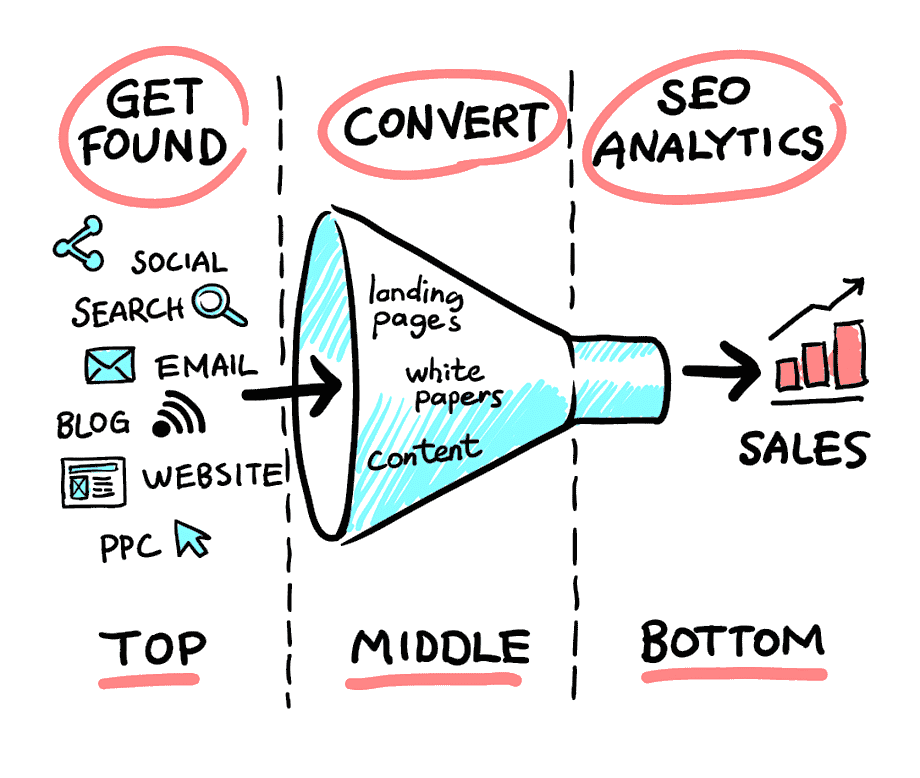
There are several steps in a sales funnel — the top, middle, and the bottom:
- Top of the funnel — the first stage is about building traffic and getting as many people as possible entering into your sales funnels and becoming aware of what you’ve got to offer
- Middle of the funnel — the second stage is about building leads so potential customers can learn how you could solve their problems
- Bottom of the funnel — in the last stage you’ll have a handful of qualified and educated customers who are waiting to make a purchase
When your potential customers move through the sales funnel, you’ll build relationships with them, and they’ll become more aware of how the products and services you’re offering can help with their pain points.
Any business owner knows the pain of just missing a sale — when after weeks of pitches and demos, chatter and charm, the prospect drops out of the sales funnel without buying the offer you’ve made.
These things happen, but it happens a lot less often when you’ve got an effective and high-converting sales funnel.
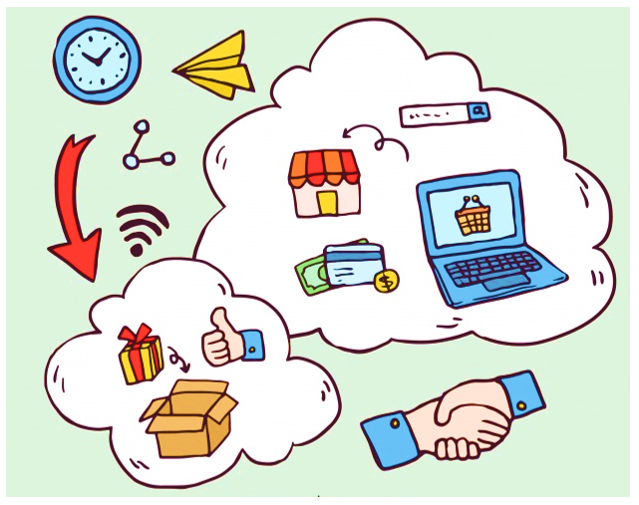
Let’s look at a quick example of how a sales funnel works for a real-life shop:
- The people at the top of the sales funnel walk by your store
- Some of them decide to walk in — that’s the next step of the funnel
- A customer sees a rack of T-shirts on clearance, and they thumb through the rack — now they’re at the next step of the funnel
- The customer chooses a T-shirt and walks to the pay point where they’ll finish the purchase and reach the bottom of your sales funnel
While some visitors never leave the top of the funnel, others reach the end and make a purchase — and optimizing the process will mean more sales!
As a marketer, you have plenty of influence on how many people, and the type of people, that are more likely to reach the end of the funnel.
You want your lead to become a customer, and you want to provide content that they’ll benefit from — this is the basic premise of a sales funnel.
To do this you need to map out your customers’ journeys — find out which content is drawing your customers so that you can optimize it for more leads.
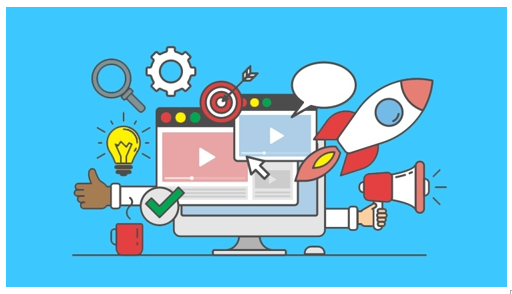
But why exactly do we use a sales funnel for this whole purpose? In any market, there’s a large pool of people who’ll show interest in your business and interact with your online business’ social media profiles.
But have you ever noticed that the number of people that interact with your content is a lot higher than your customer base?
Let’s look at how a sales funnel looks and works:
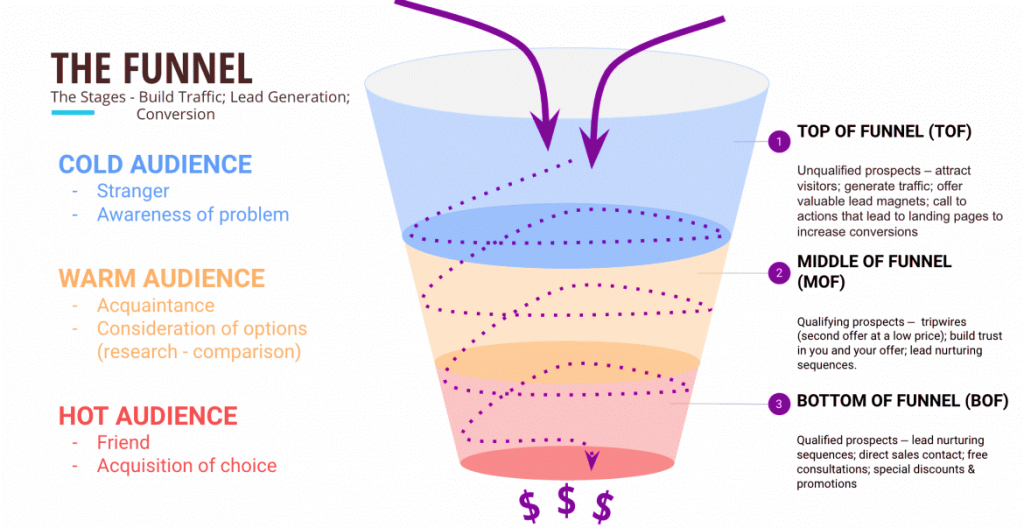
At the top of the funnel, you have a lot of prospects waiting to receive a solution to their problem — not everyone’s going to be looking for a solution, but those who do will fall further down the funnel.
In the middle of the funnel is when they receive more information and become educated about the problem that they face.
When they’re educated, some will decide that your product is best suited to their needs, while others will turn to alternative options.
This leaves you with a handful of qualified and educated customers who know what they’re buying and why they’re buying it.

The stages in a sales funnel
A sales funnel comes down to four basic stages (awareness, interest, decision, and action) — but every business is different, and some sales funnels would involve more stages to funnel a customer.
Knowing these stages is great, but you have to analyze them in the context of your business to generate the perfect funnel.
Let’s dive into the details of the three stages of a basic sales funnel.
The top — Awareness & opportunity
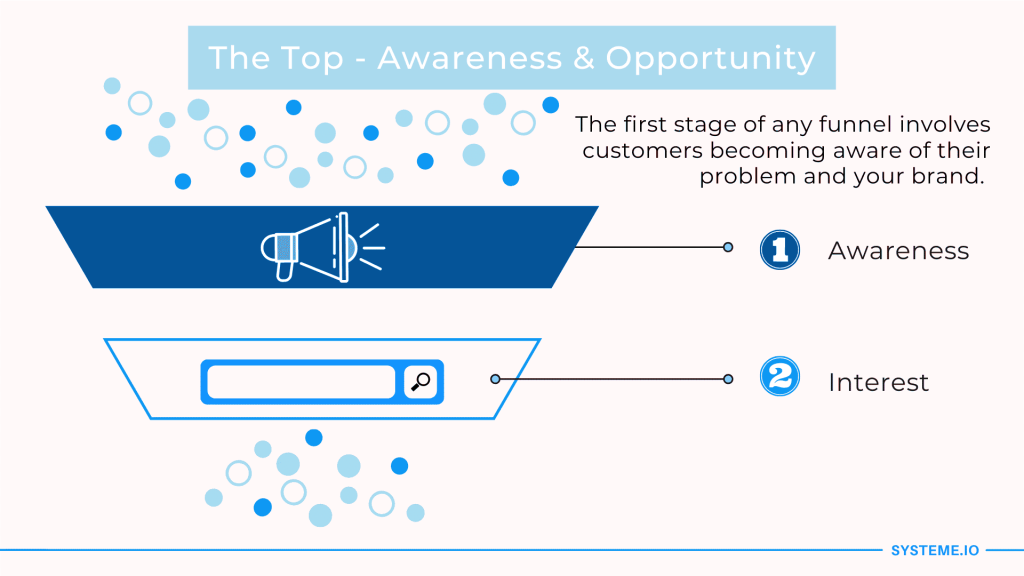
The first stage of any successful sales funnel involves customers becoming aware of their problem and your brand.
At this stage, your prospects are at the awareness and discovery point in their sales journey, and your business goals include advertising to a target audience, creating brand awareness, and building appeal to prospects.
Where there’s demand, there’s supply — and there’s opportunity.
Researching what your target audience looks for in your specific market is an absolutely essential task to get the right leads.
Here’s where vital lead nurturing takes place which works like this:
- The person identifies a problem that they face
- They start searching for answers
- As they search, they become more aware of their problem and options
- Then they start looking for an opportunity to fix the problem
All these leads are looking for solutions to their problems.
They’re dedicating time to making a change in their life — no matter how large or small the problem might be, and they’ll have questions.
Your leads will now know how to define their problem but won’t know how to solve it — and this is where you come in by giving them the right content.
Modern consumers are savvy, and they look through a variety of available content across several websites before funneling into the next phase.
You want to give the lead educational content that’s suited to helping them solve their problem and guide them towards buying your products.
It’ll guide leads towards the solutions that matter to them.
You should optimize your website and produce good quality content to increase the chances of driving your leads down the funnel into your sales pit!
The goal of lead nurturing is to capture the engagement of your prospects starting at the top of the funnel right down to the bottom — this means that when your prospects are ready to buy, they’ll choose your business.
Through lead nurturing, positive relationships with buyers are developed through various activities from email subscription sign-ups to free trials.
With that said, if everything goes to plan, you should currently have a handful of leads ready to be funneled.
The middle — Find solutions
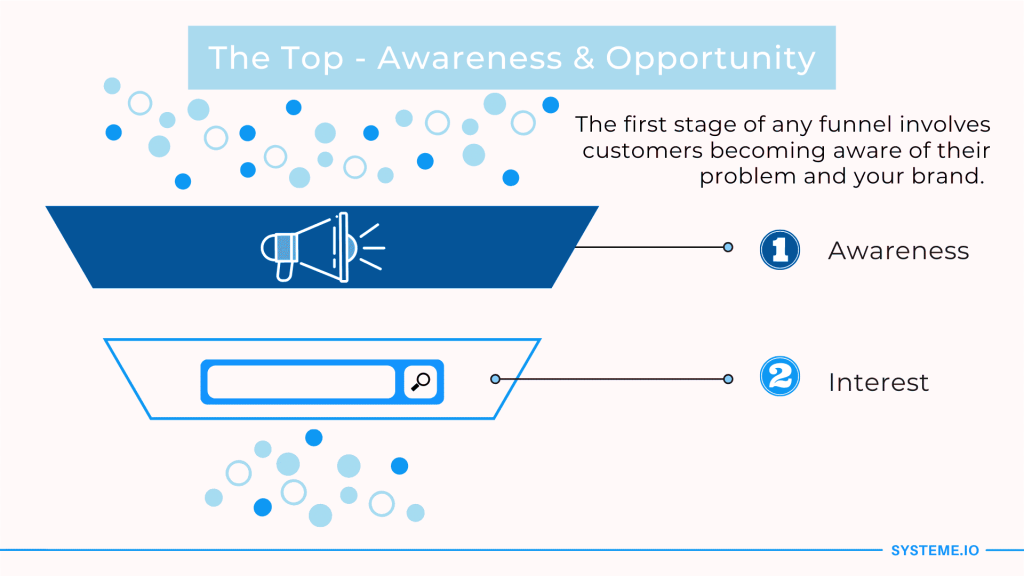
At the middle-funnel stage, you’ve generated the leads already in your database — you’ve got their attention, but now you want their engagement!
This second stage of a sales funnel takes the educated leads and allows you to showcase your product as their solution — this why the middle phase is the most important part in building an effective sales funnel.
The goals of your middle funnel marketing should include:
- Taking your prospects from the awareness phase to the decision phase by educating them further about your offers
- Nurturing leads, guiding them to go through with purchases
- Inspiring an emotional connection with your prospects
Only about 6% of marketers rated their content marketing as highly effective — it’s clear that most marketers need better ways to optimize their funnels.
Your prospects in the middle are looking for a product that will provide solutions to their specific needs.
This is why an important aim of middle funnel content is lead nurturing, much like top-funnel content. But since your leads have already taken an interest, you’ve got an advantage.
While top-funnel content is about creating brand-prospect connections, the middle-funnel is where you strengthen those connections.
Your middle-funnel audience can be separated into 2 groups:
- Existing customers who should be persuaded to continue buying products or services from your online business
- New leads from the top-funnel that you want to convert into customers
With both groups, your goal is to persuade them to choose your business.
This stage is where decision-making takes place and where the content starts to matter — and the questions your leads have will no longer be generic.
The questions of your leads will be aimed at finding the products, services, and businesses that they see as the best fit for their needs.
As much as a sales funnel is about the customer, you also don’t want to find yourself sitting with a lead that does not benefit your company.
Capturing leads with qualifying questions can help you to eliminate those that do not require as much attention as leads that are looking to convert.
Speaking of conversion, this is the perfect time to start calculating your conversion rates to ensure that your online traffic is doing what it should do — if you have a lot of clicks, but no conversion then something is wrong.
At this point in your funnel, you should start introducing content like product comparisons, webinars, case studies, and targeted video content.
This stage is a pivotal point in the funnel because based on the quality of your content, leads will either move into or away from the funnel.
If you want to keep your best leads and ready for sales, offer valuable mid-funnel content to distinguish your brand and leave a lasting impression.
The bottom — Time to make some sales!
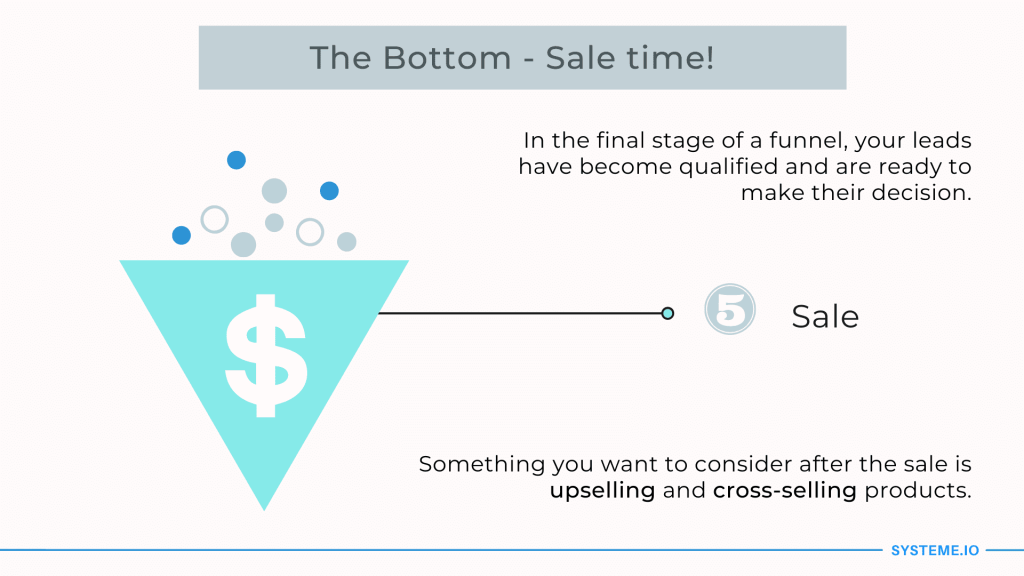
Your leads have now become qualified and are ready to make their decision after you’ve ensured that all the content you have provided thus far is valuable, educational, and helpful to your audience.
During this final phase of the funnel, the leads will start asking vendor-driven questions to choose the company that can cater to their specific needs, solve their problem, and suit their budget.
You can hook and reel your leads in with bundle deals, discounts, promotional offers, or money-back guarantees.
By ensuring that you are giving the best deal amongst your competitors, you can practically secure your sale.
This does not mean that you should disregard competitive pricing but try to find a sales strategy that defines your brand.
Other ways to ensure that your content is still driving the lead to buy into your product, is by providing FAQs, video demos, or by comparing features between in-house products.
This is a great way of ensuring that your leads are aware of options within your company and will ease the proposal and negotiation phases.
You also need to optimize your website to include:
- A simplified checkout process that’s easy to navigate
- A trust symbol to show that your website is secure
- The original price followed by the discounted price
- An offer for customer support
- A list of the items in the cart
Once the details are secured, you have yourself a sale (and a new customer)!
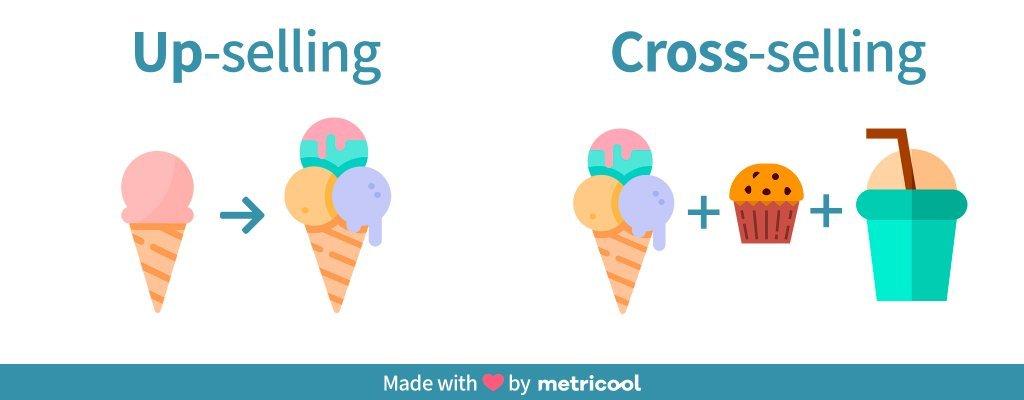
Upselling is a technique that salespeople use to invite the customer to buy a higher-end (often more expensive) product than the one in question.
An example of this would be promoting an iPhone 12 to a customer that is looking to upgrade from an iPhone 11.
Upselling is not to be confused with cross-selling — which is a process that involves selling add-ons to the existing product (something like Air Pods or an Apple Watch to accompany their new iPhone 12)
But what does this have to do with your product?
Well, by using these techniques in conjunction, you can offer exclusivity to your customers, without paying for additional marketing channels.
Other things that upselling and cross-selling can offer includes increases in profits, customer loyalty, and the lifetime value of your customers.
It also allows for a balanced growth between old and new customers, especially since it’s easier to sell to an existing customer than a new one.
3. The top 3 high-converting sales funnels
We’ve selected 3 companies that most people have been exposed to:
- Apple (electronics)
- Netflix (streaming services)
- The Dollar Shave Club (personal services)
3.1. Apple’s sales funnel
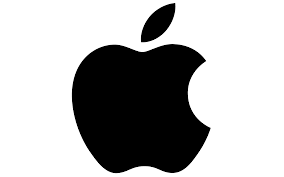
Apple’s logo
Brand recognition is something Apple doesn’t have to worry one bit about.
But why is this?
It’s quite simple: they focus on the consumer, not the product.
Let’s have a look at Apple’s sales funnels:
3.1.1. The top of the funnel
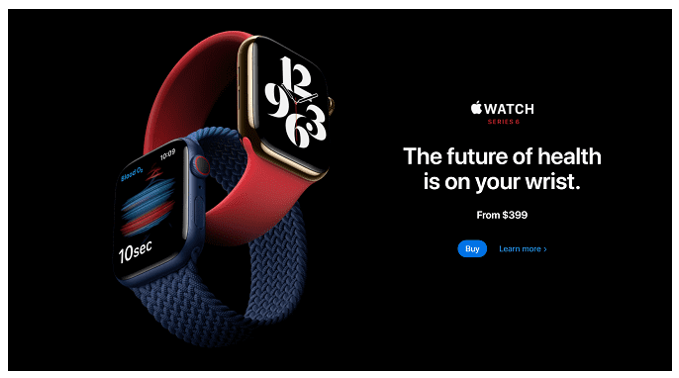
- This is Apple’s landing page for their watches
- The first thing you are met with, unsurprisingly, is a watch
- But notice how they subtly incorporate the “you” into their sales conversation — they know that the thing on their customer’s minds is solving their own problem
- Apple markets “the future of health” and makes something that seems daunting to obtain, a simple victory — “Just wear it on your wrist”
- When you visit their website, you know that their sales conversation is kept to one key benefit and one focused-on product — meaning that their watch section focuses mainly on watches, not their phones as well
3.1.2. The middle of the funnel
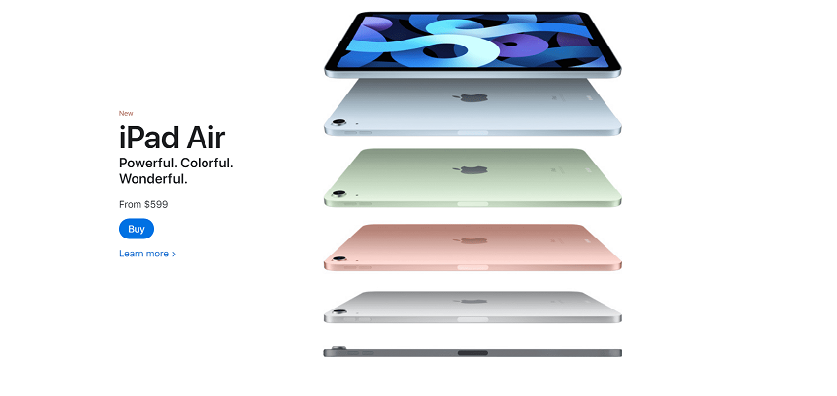
- Design is super important, and Apple keeps it simple, and informative
- There’s no page that you will land on that’s convoluted with information and difficult to navigate
- They sell the simplicity of their product before they even convert the lead (though we know that their leads show up as willing customers)
- Their use of language is concise and simple
- They use elegance and class to showcase their product and don’t need many words to speak for it — with a very simple design
- Doing a lot with a little is one of their key strategies and distinguishes them from other companies
3.1.3. The bottom of the funnel

- Before the upsell, they already offer a promotion — and they don’t throw it in your face, they simply happen to mention it
- Their choice of promotion isn’t conventional either
- They ask for a “trade-in” to make your new purchase cheaper
- Their checkout is simplified, and we’re all very familiar with their packaging — that is to say, it never disappoints
Well, don’t stop there!
Apple keeps improving its services, engaging with its customers, and continually offers value and exclusivity.
Additionally, they also have a brilliant way of up-selling and cross-selling their products long after the user has purchased their main device.
3.2. Netflix’s sales funnel

3.2.1. The top of the funnel
From the get-go, Netflix educates the lead on what their product is, and is confident enough to give the guarantee that the subscriber can cancel at any time, should they want to.
This is unconventional and not something that is usually the first thing a company markets — by offering their leads the option to cancel easily, they remove the fear customers have of paying for a costly subscription.
They also play it smart by listing the benefits of using Netflix — “enjoy on your tv”, “download shows to watch offline”, and “watch everywhere”.
They also add a FAQ section to the bottom of their page.
Netflix sells off the fact that they are popular, however, they still aim to introduce their strong brand image to their leads.
They have a great offer, with zero risks.
3.2.2. The middle of the funnel

As with the previous example, you can see that most large businesses focus on their audience, not their product.
This is because they have enough trust in their product to know it works and can focus solely on producing a satisfied customer.
Instead of immediately throwing prices in your face, Netflix ensures that you know that their product is priced at its best.
They reinforce their landing page message.
The simple design of the website is also effective in creating a calm and uncomplicated atmosphere — no distractions, only their product and you.
3.2.3. The bottom of the funnel
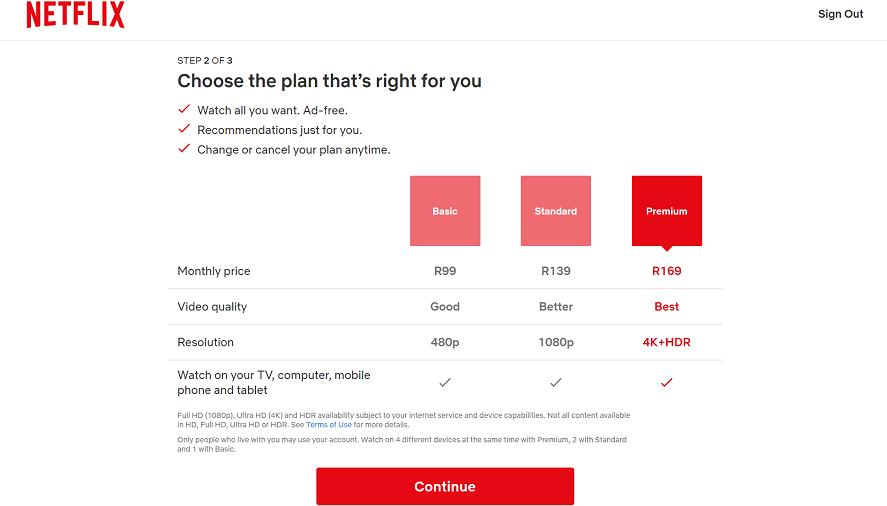
Here they show you the pricing for the plans and cheekily select the premium plan automatically, playing into the fact that their premium subscription is the best.
After you press the continue button you are guided to the payment page. Inputting your details is simple and fuss-free.
Something that is also unique about Netflix is that they offer a customer care line throughout all the steps of setting up an account — instilling a sense of trust with their customers.
3.3. The Dollar Shave Club’s sales funnel
After watching the Dollar Shave Club’s advert, we just couldn’t help but include this fast-rising business in our sales funnel examples.
If you don’t know which advert it is that we’re talking about, here it is:
But how do they do it?
3.3.1. The top of the funnel
After watching this advert, you can see that they are pointing out your problem while promoting their brand as the solution.
“Stop paying for shave tech you don’t need and stop forgetting to buy your blades every month. Alejandro and I are going to ship ‘em right to you.”
There may be a few other things that would convince you to buy into their product, but not much convincing is needed. Their main message is selling their product, a shaving subscription box, to you. It’s as simple as that.
3.3.2. The middle of the funnel
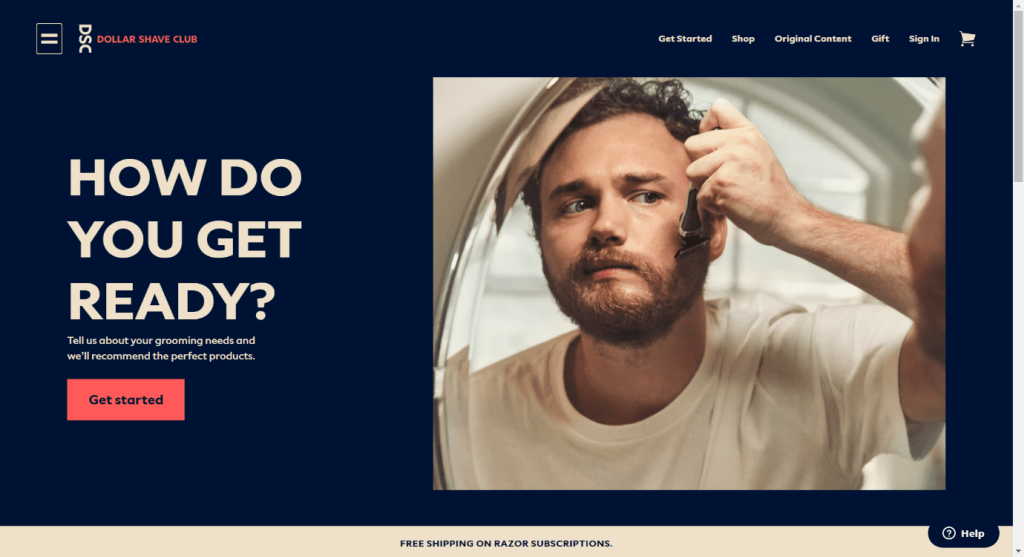
You click through to their website and find that there is yet another main focus on you, the consumer.
By asking you to complete a short quiz on what your shaving routine is, they can tailor their products to your needs.
This allows customer individuality to flourish, and it doesn’t stop there.
When you do the quiz, they not only customize a range of their products to your exact needs, but they also set up a routine for you to follow, plus offer a discount on the price.
The company offers straightforward solutions to a common problem.
They removed all the bells and whistles that shaving companies usually market off of, and they made a killing of it!
The Dollar Shave Club (DSC) educates the customer and then showcases their product as a solution.
Sometimes setting your brand apart from the rest is easier than you might imagine.
3.3.3. The bottom of the funnel
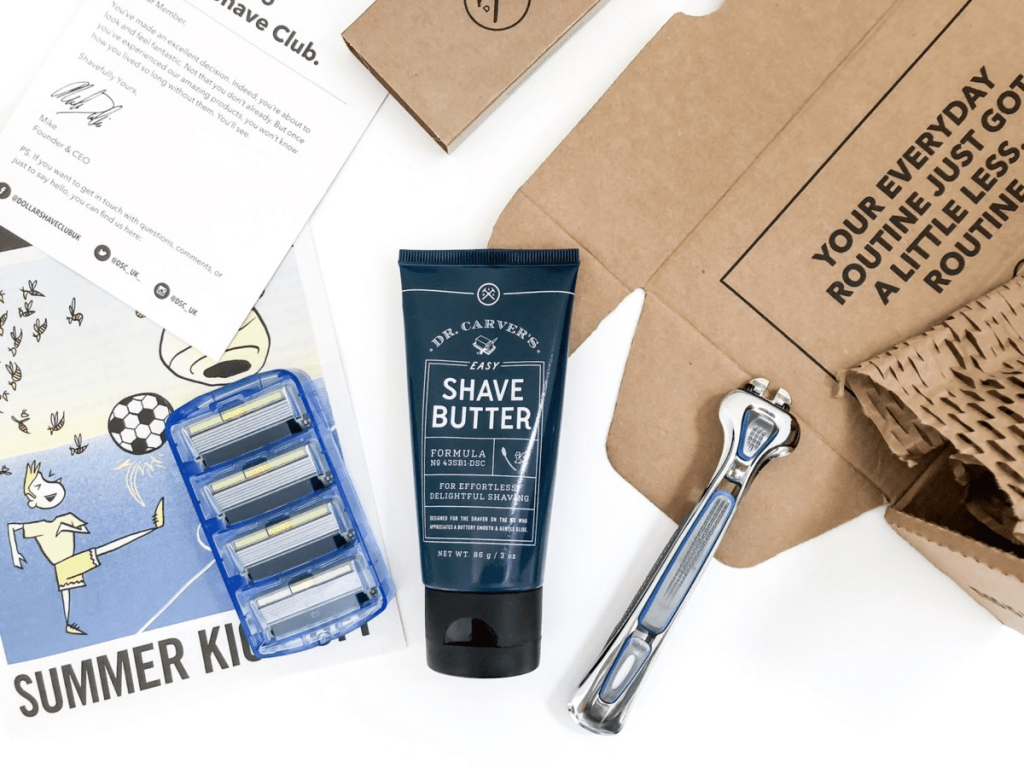
The Dollar Shave Club sells its simplicity.
Their packaging is simplified to showcase their product — men’s shaving products.
Their packaging introduces a flair and style that just makes sense for a men’s hygiene box.
To set their product apart, even more, they also add short jokes to their packaging, further fostering a comedic brand image.
Additionally, the company sends along a magazine insert entitled “The Bathroom Minutes” in their monthly subscription boxes; something small, free, and simple to keep DSC members in touch with the brand.
Their website is simple. Their product is simple. Their message is simple.
4. The 5 easy steps to create a sales funnel
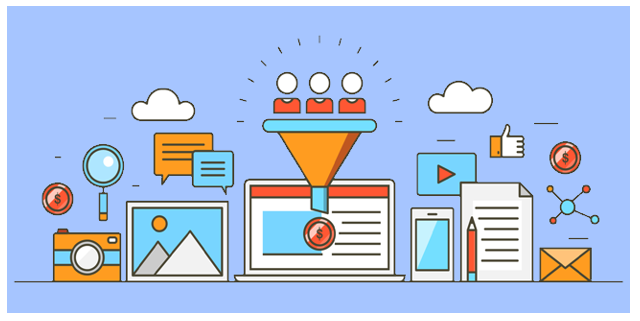
- Analyze your audience’s behavior — You want to sell your product to your audience, so the more effectively you can market to the right audience, the better for your sales funnel
- Capture their attention — Lure in those leads by making sure that your audience knows your brand, using various types of promotional content, and giving them valuable information they can use
- Build a professional landing page — Prospects that are still at the beginning phases of your funnel need something that will entice them to stay, so your landing page should aim to guide the lead towards buying your product (include some call-to-action buttons!)
- Create effective email marketing campaigns — Offer amazing content in your marketing emails, and make sure to email your customers regularly (but not too much!)
- Thank loyal customers — Don’t forget about your existing customers — continue to offer them discounts, and include them in your social media marketing strategies
5. Using Systeme.io to build sales funnels

As an all-in-one platform, it was created to combine all the tools you need.
This allows you to manage every single aspect of your business, without the hassle and without any tech or coding knowledge.
Our platform has all the features you need to build effective, high-converting sales funnels in just a few easy clicks.
The whole point is to make the process easier and faster so that you can focus on what’s important — growing your business and making money.
Systeme.io’s all-in-one approach eliminates the need for you to struggle with a bunch of complex integrations or expensive subscriptions to loads of different tools that eat away at your profits.
There are just six tools you need to launch, grow, and scale your online business, and systeme.io has them all:
- A website builder and editor to create professional landing pages
- A sales funnel builder to convert your visitors into paying customers
- Tools for email marketing to get the right product to the right person
- Tools to create and sell online courses and digital or physical products
- Tools to automate your marketing so you can sit back and relax
- A tool to manage your affiliate programs to increase your revenue
Read on to have a look at systeme.io’s features and affordable price plans.
5.1. Systeme.io’s features
If you don’t have them, you can’t grow your business.
Systeme.io has helped thousands of entrepreneurs kickstart their businesses with an easy platform that has every tool you need.
5.1.1. Create sales funnels in a few clicks
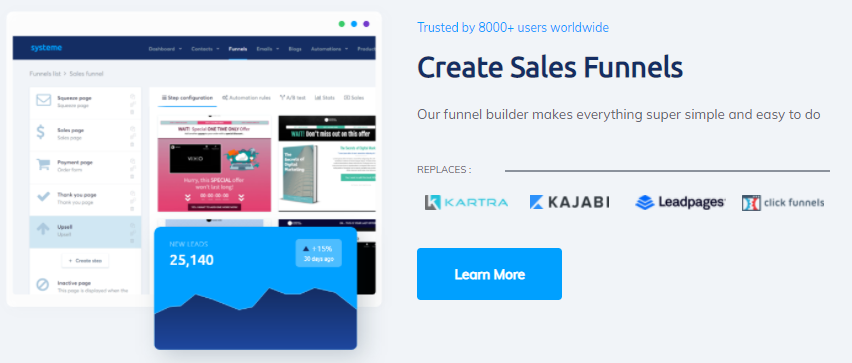
All you have to do is decide which kind of funnel you want to create, choose the template you want, and update the pages with your content.
It’s easy to make changes using our visual, drag-and-drop page editor, and our sales funnel builder comes with automation tools that you can use to create more efficient processes to save you time and money.
You can seamlessly use the A/B testing tools in just a few clicks, making it really simple for you to test the effectiveness of different page designs.
Systeme.io makes building the perfect sales funnel super easy with these features:
- Build and automate sales funnels with a drag-and-drop editor that’s easy to use and even easier to understand
- Speed up the process with our proven template
- Integrate your email list, payment system, and membership sites
- Trigger email sequences and give instant access to courses
5.1.2. Send marketing emails to grow your email list
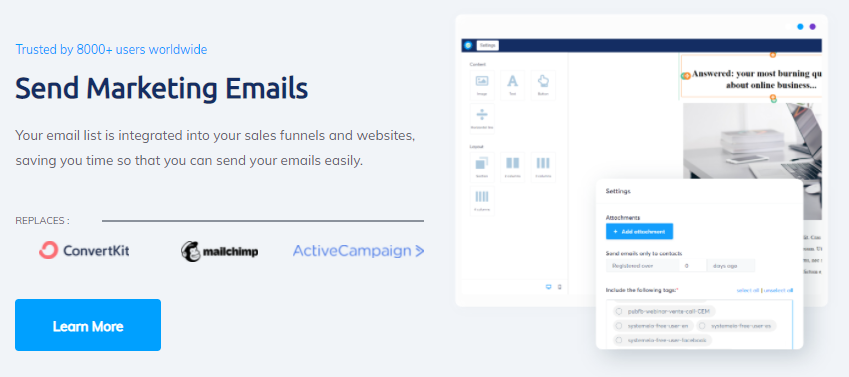
- Send unlimited emails to all your contacts
- Set up automated email sequences to deliver marketing emails to your customers when you want to
- Keep track of your emails with in-depth statistics including analytics on
- Categorize your customers and send tailored emails
With the easy-to-use email editor, you can send either one-time broadcasts or create library emails to use in your automation and drip sequences.
The best part is that once you’ve created your email sequence, you can trigger and automate it in any of your sales funnels.
Want to know more about the tools for email marketing? Click here.
5.1.3. Build websites & landing pages

- Start with our website templates and speed up the building process with our simple-to-understand interface
- Create the website you want with the drag-and-drop editor
- Integrate your email list, payment system, and membership site
- Create and add a blog for your audience
Want to know more about our website builder? Click here.
5.1.4. Manage your affiliates in one place

Systeme.io has affiliate management built right in, with a slightly unique approach — every one of your subscribers automatically becomes an affiliate.
All they have to do is start sharing the link (sent to them using a broadcast or automated email) and they’ll start getting commission payments.
Systeme.io is made to manage your affiliates and payouts all in the same convenient location with these features:
- Easily track your affiliates
- Manage affiliate commissions and payouts
- Integrate your email list, payment system, and membership sites
- Publish your offers on the marketplace for thousands to see
Want to know more about the affiliate program? Click here.
5.1.5. Create & sell online courses or membership sites
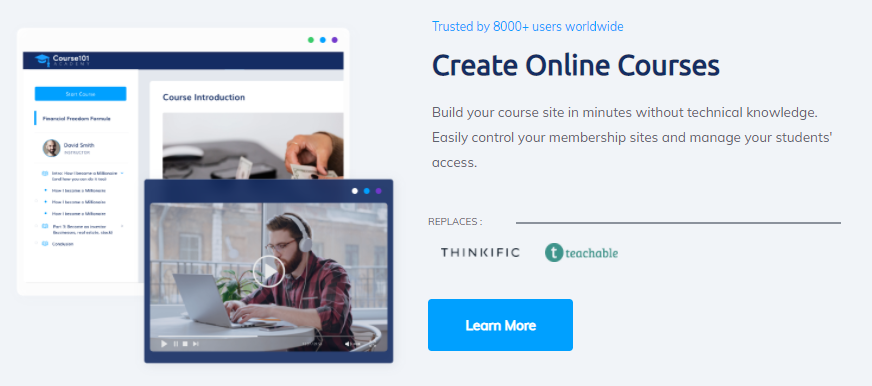
The course pages and resources are fully customizable using the funnel page builder — meaning that you get freedom and control over the look and feel of your courses, allowing you to create the experience you want.
You can easily and without hassle create your online courses with efficient templates and a simple interface.
Systeme.io give you all the tools, templates, and tips to make sure your content sells with these features:
5.1.6. Automate your business’ marketing strategies
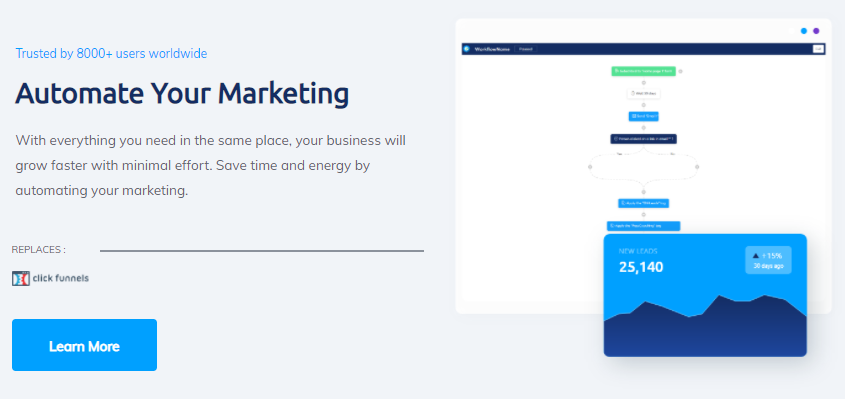
- Capture leads automatically with integrated funnels and emailing
- Automate and personalize repetitive email sequences for products, courses, and membership sites
- Add automated rules to any element of your website and funnel
- Automatically trigger emails and membership access
And we also know you don’t have money to waste.
Want to know more about the tools for automated marketing? Click here.
5.2. Systeme.io’s affordable pricing
There isn’t one — systeme.io is easily the most affordable online business tool.
Keep in mind that all the plans (including the free option) include:
- Unlimited emailing to your contacts
- Unlimited file storage space so you can create funnels based on our tried and tested templates
- Unlimited members on your site
- No transaction fees
- Access to affiliate programs to increase your income through referrals
- Online support whenever and wherever you need it
Here’s an overview of systeme.io’s pricing plans:

All in all, our platform.io lets you run your entire business from a central platform, which also has email marketing.
This is a pretty significant time and money-saving option — as you won’t have to pay for any additional tools whatsoever.
6. Conclusion
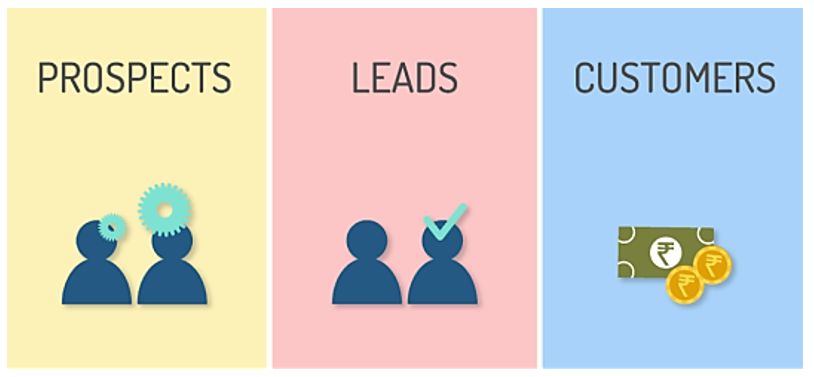
But once you have it, you’ll be able to build a business that easily trumps your competition — and your sales funnels will keep making you money!
Remember to take your time when building a sales funnel — all businesses are different and require more focus on certain stages than others.
Use the 3 examples that we’ve shown you in this post to help set up an effective website to funnel customers that leads the prospects to make a sale.
Or make your life a lot simpler and use systeme.io as your all-in-one solution to build the perfect sales funnel and a thriving online business!
Why don’t you give the Freemium plan a chance?
You’ve got nothing to lose, and everything to gain.




